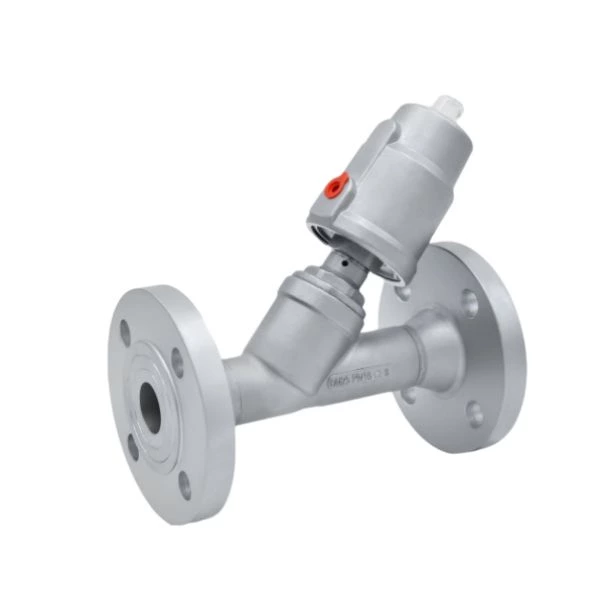Application Of Angle Seat Valve In Daily Life
Controlled gases: neutral gases, air. Controlled liquids: automated industrial fluids, food-grade dairy products, domestic water, and general pipeline fluids.
Product Features
1. Indicates valve open/closed position.
2. External pneumatic pilot extends service life and is maintenance-free.
3. A self-adjusting gland seals between the overflow port and the slider for improved sealing performance.
4. The angle seat design of the valve body enables high flow rates (especially compared to conventional globe valves), while being compact and providing fast response.
Angle Seat Valve Features:
1. The valve is opened or closed by rotating the valve core.
2. Pneumatic ball valves offer flexible opening and closing capabilities and are compact.
3. They can be manufactured in large diameters.
4. They offer reliable sealing, simple structure, and easy maintenance and repair.
5. The sealing surface and the ball surface are always in a closed position, making them less susceptible to erosion by the medium.
Pneumatic Angle Seat Valve Features:
1. Visual position indication: Accepts connection to limit switches or emergency manual override.
2. Simple installation: The actuator head rotates 360 degrees, allowing for convenient installation of one or two limit switches.
3. Advanced pneumatic controller: Thickened engineering plastic housing for safety and reliability. Low-wear piston construction provides high capacity with low energy consumption. Self-lubricating internal components for maintenance-free operation.
4. Available in multiple control modes: Normally Open, Normally Closed, and Double Acting.
5. For smaller actuators: A smaller control head is available when fluid flows from above the valve stem.
6. Simple connection: MAMUR standard connection with snap-on metal connector.
7. Long-life guide stem: The stem features a wedge-shaped Teflon (PTFE) seal to prevent the introduction of debris. Self-lubricating and maintenance-free. The stem is specially treated for optimal retention and self-alignment.
8. There is no water hammer effect. When the fluid flows in from the bottom of the valve stem, the water hammer (water impact force) is absorbed.
Pneumatic ball valves are usually used for opening and closing. Their main features are compact structure and simple operation, maintenance and repair. Therefore, they are suitable for general working media such as water, solvents, acids and natural gas. In addition, they can also be used for relatively harsh working environments. Moreover, their valve bodies can be either integral or combined.
Pneumatic angle seat valves have the main features of large flow, small flow resistance and long service life. Their valve stems are generally made of 316L stainless steel.
After briefly introducing pneumatic ball valves and pneumatic angle seat valves, let's talk about their advantages so that everyone can better distinguish them.
The advantages of pneumatic ball valves are:
(1) They are easy to open and close and can be made into large diameters.
(2) They have a simple structure, reliable sealing performance, and are easy to maintain and repair.
(3) It is not easily eroded by the medium, so it is not easily corroded. The advantages of pneumatic angle seat valves are: (1) Simple installation and safe and reliable use. (2) Large capacity, low consumption, and small size. (3) The fluid flow pattern is better and can withstand high and low temperature corrosion. The valve body is made of stainless steel, so it is not easily corroded. Pneumatic angle seat valves are a new generation of pneumatic angle seat valves developed in combination with modern industrial applications. The working principle of pneumatic ball valves is to rotate the valve core to make the valve open or closed. Pneumatic ball valves are flexible to open and close, small in size, can be made into large diameters, have reliable sealing, simple structure, and are easy to maintain and repair. The sealing surface and the spherical surface are often in a closed state. Pneumatic ball valves are not easily eroded by the medium and are widely used in various industries. Pneumatic ball valves and plug valves are valves of the same type, except that its closing member is a sphere, which rotates around the center line of the valve body to achieve opening and closing.
